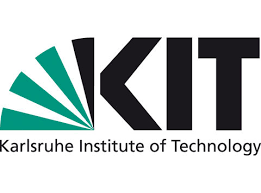Karlsruhe Institute of Technology: Using water resources more sustainably with a hydrological database
How do droughts affect the environment? What are the consequences of heavy rain? How are the water levels in rivers changing? Hydrological datasets, i.e. those on groundwater levels, water runoff quantities or precipitation, can help to answer these and other questions about the water balance and the effects of climate change. Despite one of the most extensive hydro-meteorological measuring networks in the world, such a uniform data set, called “CAMELS”, is not yet available for Germany. Researchers at the Karlsruhe Institute of Technology (KIT) now want to create this together with partners in the “CAMELS-DE” initiative. The first freely available data sets should be available as early as 2023.
Knowledge of water runoff quantities, land use, soil properties, precipitation and temperatures is essential in order to be able to better assess the water management effects of climate change on the water cycle in Germany, for example. It also helps to develop methods for forecasting and risk assessment of hydrological events and to better assess hydrological extremes such as floods and periods of low water. CAMELS data sets (CAMELS stands for “Catchment Attributes and MEteorology for Large-sample Studies”) combine these data and make it possible to carry out modeling and data analysis of different landscapes.
“With the CAMELS-DE data set, we want to facilitate transnational analyzes in hydrology in Germany,” says Dr. Ralf Loritz from the Institute for Water and River Development – Hydrology Department of KIT, who is building the database together with researchers from the University of Freiburg, the University of Kiel, the German Research Center for Geosciences GFZ and other institutions in Germany. “Because federal state or state borders always mean new responsibilities and often only limited data availability in the environmental sciences. This inhibits hydrological research.”
CAMELS-DE bundles hydrological and meteorological data
CAMELS data sets combine landscape features such as land use, geology or soil properties with hydrological and meteorological time series such as water levels and runoff as well as precipitation, temperature and evaporation. They offer the possibility to compare models and data analyzes in a variety of heterogeneous landscapes and to evaluate hydro-meteorological variability and change in time and space.
“In CAMELS-DE we want to consistently compile long time series of water level and discharge measurements from all federal states. With the help of the associated catchment area boundaries, we also generate meteorological time series from freely available data from the German Weather Service and integrate them into the data set,” says Loritz. “The already published CAMELS datasets from other countries serve as a template for us. We want to add additional attributes that are particularly relevant for Germany, such as high or low water levels.”
The researchers plan to publish the first datasets in spring 2023. They are then striving for long-term cooperation between research and state and federal authorities in order to minimize the effort involved in data collection in the future, to integrate the data into teaching, to strengthen the networking of research groups and to facilitate the exchange of results. “We joined forces in 2022 with the vision of creating an improved starting point for hydro-meteorologically relevant data in Germany for both the national and the international hydrological community,” says the hydrologist.
Hydrology as the basis of sustainable water management
At KIT, the work on the database is funded within the project “ViTamins – Invigorating Hydrological Science and Teaching: merging key Legacies with new Concepts and Paradigms”, which started in April 2022. It is intended to strengthen the subject of hydrology as the basis for sustainable water resource management in times of climate change and to network meteorology and climate research with ecology and soil science.

